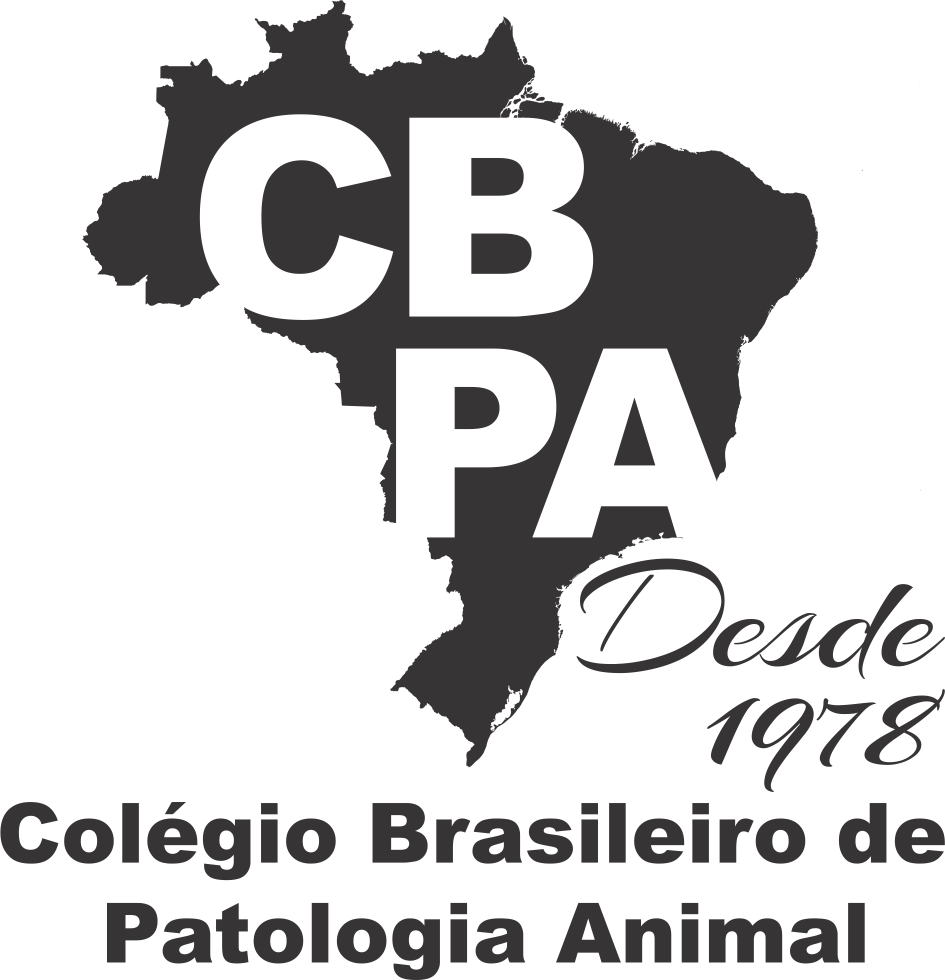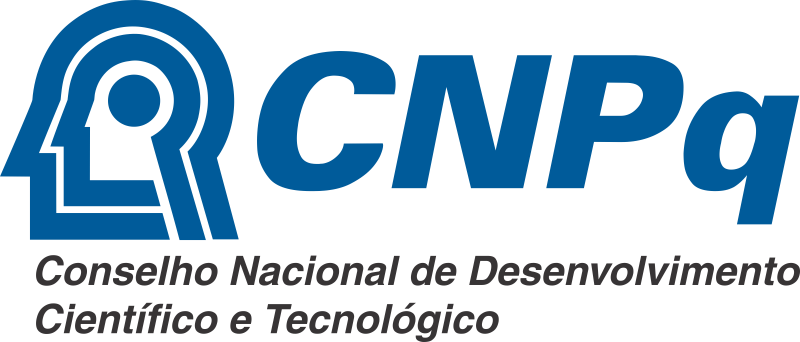Resultado da pesquisa (2)
Termo utilizado na pesquisa Lasalocid
#1 - Effectiveness of lasalocid assessment and some epidemiological factors of Eimeria spp. parasitizing Nellore calves kept on pasture, 37(2):121-128
Abstract in English:
ABSTRACT.- Cruvinel L.B., Borges D.G.L., Nicaretta J.E., Bastos T.S.A., Moro E., Gama R.D., Borges F.A. & Lopes W.D.Z. 2017. [Effectiveness of lasalocid assessment and some epidemiological factors of Eimeria spp. parasitizing Nellore calves kept on pasture.] Avaliação da eficácia da lasalocida e de alguns fatores epidemiológicos de Eimeria spp. parasitando bezerros Nelore mantidos em regime de pastejo. Pesquisa Veterinária Brasileira 37(2):121-128. Instituto de Patologia Tropical e Saúde Pública, Universidade Federal de Goiás, Goiânia, GO 74605-050, Brazil. E-mail: wdzlopes@hotmail.com
The main importance of eimeriosis in cattle is due to lower performance shown with the disease in its sub-clinical form. This study evaluated the efficacy of lasalocid used against Eimeria spp. parasitizing calves. We also evaluated the weight gain of calves submitted to different treatments and analyzed some epidemiological factors that might interfere with Eimeria infection; 288 calves were used in the study. The calves of treatment 1 received protein mineral salt in low consumption without lasalocid, while the calves of treatment 2 received protein mineral salt on low consumption with lasalocid, administered orally to 4 to 10-month-old calves. Harvest of feces and weight control was made on days 0 (before the start of the experiment), at weaning, and 30 and 60 days after weaning (DAW). Evaluation of some epidemiological factors which could be related to infection by Eimeria spp. of the calves, such as weaning, sex and time of year, were analyzed, taking into account the results regarding the 144 calves of the control group. Nine species of Eimeria were identified in descending order: E. brasiliensis, E. wyomingensis, E. bovis, E. canadian, E. zuernii, E. auburnensis, E. ellipsoidalis, E. pellita and E. cylindrica. Unexpectedly, decrease in parasite load could be observed after weaning. Even the farm did not adopt management measures aimed for greater productivity, as Artificial Insemination in Fixed Time, which in turn ends up with increase of the number of births and animal unit per hectare at a certain period of year, high parasitism of coccidia was diagnosed in calves of the control group. Oocyst counts per gram (OPG) of calves treated with lasalocid were significantly lower (P≤0.05) in the control group. The compound achieved ≥95% efficacy against the parasite in question. At the end of the study, calves fed lasalocid gained on average 7.2kg (p≤0.05) more than calves in the control group. For a farm that aims to sell calves soon after weaning, is recommended to start treatment with lasalocid, with the creep-feeding, from an age of three months on, since the weight gain calves treated with lasalocid was significantly (p=0.05) higher compared with the weight gain of the control group after five months of treatment. The difference in weight gain of calves treated with lasalocid compared with caves in the control group may also be partially related to the infection by Eimeria spp., as discussed in this paper.
Abstract in Portuguese:
RESUMO.- Cruvinel L.B., Borges D.G.L., Nicaretta J.E., Bastos T.S.A., Moro E., Gama R.D., Borges F.A. & Lopes W.D.Z. 2017. [Effectiveness of lasalocid assessment and some epidemiological factors of Eimeria spp. parasitizing Nellore calves kept on pasture.] Avaliação da eficácia da lasalocida e de alguns fatores epidemiológicos de Eimeria spp. parasitando bezerros Nelore mantidos em regime de pastejo. Pesquisa Veterinária Brasileira 37(2):121-128. Instituto de Patologia Tropical e Saúde Pública, Universidade Federal de Goiás, Goiânia, GO 74605-050, Brazil. E-mail: wdzlopes@hotmail.com
A principal importância da eimeriose em bovinos, se deve ao baixo desempenho produtivo que os animais demonstram quando esta enfermidade apresenta-se sob a forma sub-clínica. Como objetivos, o presente trabalho avaliou a eficácia do uso da lasalocida sódica contra espécies de Eimeria spp. parasitando bezerros; avaliou também o desempenho ponderal dos animais submetidos aos diferentes tratamentos e analisou alguns fatores epidemiológicos que possam interferir na infecção por Eimeria nos bezerros. Foram utilizados 288 bezerros no dia 0 do estudo. Os animais pertencentes ao tratamento 01 receberam sal mineral proteinado de baixo consumo sem adição de lasalocida, enquanto que os bezerros do Tratamento 02 sal mineral proteinado de baixo consumo, com adição de lasalocida sódica, administrado via oral para bezerros dos quatro/cinco/seis meses até dez meses de idade. Colheita de fezes e pesagem dos animais foram realizadas nos dias 0 (antes do início do experimento), na desmama, 30 e 60 dias após desmama (DPD). A avaliação de alguns fatores epidemiológicos que pudessem ser relacionados com a infecção por Eimeria spp nos bezerros, como o desmame, sexo e época do ano, foram analisados neste estudo, levando-se em consideração os resultados encontrados durante todo estudo, para os 144 animais pertencentes ao grupo controle. Foram identificadas nove espécies de Eimeria nos bezerros em ordem decrescente: E. brasiliensis, E. wyomingensis, E. bovis, E. canadenses, E. zuernii, E. auburnensis, E. ellipsoidalis, E. pellita e E. cylindrica. Inesperadamente, diminuição na carga parasitária dos animais pode ser observada após o desmame. Mesmo a fazenda não adotando medidas de manejo que visam maior produtividade como a Inseminação Artificial em Tempo Fixo, que por sua vez acaba aumentando o número de nascimentos e unidade animal/hectare em uma determinada época do ano, elevado parasitismo pelo coccídio em questão foi diagnosticado nos bezerros pertencentes ao grupo controle. Talvez a época do ano em que o estudo foi realizado pode ter influenciado neste aspecto. As contagens de oocistos por grama (OoPG) de fezes para Eimeria dos animais tratados com lasalocida foram estatisticamente inferiores (P≤0,05) as do grupo controle após o início do estudo. O composto alcançou eficácia ≥95% contra o parasito em questão. No final do estudo, os animais que receberam lasalocida ganharam em média, 7,2kg a mais (P≤0,05) que os bezerros pertencentes ao grupo controle. Em propriedades que tem como objetivo a venda de bezerros logo após a desmama, recomenda-se o início do tratamento com a lasalocida, junto ao creep-feeding, a partir de três messes de idade, uma vez que diferencial no ganho em peso médio dos bezerros tratados foi significativamente (P≤0,05) mais elevado, em comparação ao grupo controle, após cinco meses de tratamento com o referido composto. Apesar de a lasalocida ser utilizada como um aditivo alimentar para animais, a diferença no ganho em peso vivo médio entre animais tratados com a lasalocida, em comparação a animais pertencentes ao grupo controle, também pode ser relacionada, em partes, a infecção dos animais por Eimeria spp., conforme discutido neste artigo, entretanto, futuros estudos devem ser conduzidos para comprovar esta hipótese.
#2 - Intoxicação por antibióticos ionóforos em animais, p.191-197
Abstract in English:
ABSTRACT.- Nogueira V.A., França T.N. & Peixoto P.V. 2009. [Ionophore poisoning in animals.] Intoxicação por antibióticos ionóforos em animais. Pesquisa Veterinária Brasileira 29(3):191-197. Projeto Sanidade Animal Embrapa/UFRRJ, Seropédica, RJ 23890-000, Brazil. E-mail: pfpeixoto@terra.com.br
The therapeutic use of ionophores in veterinary medicine has grown in the last years, with resultant increase in the risk of poisoning in animals. Ionophores are used as food additives as coccidiostacts in several animal species and growth promoter and bloat prevention in ruminants. The most often used ionophores are monensin, lasalocid, narasin and salinomycin. There is a great variation in the susceptibility to the toxic effect of ionophores in different animal species. Poisoning can occur when the dosage is too high or when not correct doses for a certain animal species are given. Cases of poisoning have been described in sheep, swine, horses, dogs and poultry. For horses ionophores are extremely toxic. The use of ionophores is only safe when used accordingly to the instructions of the manufacturer and especially for each animal species. In this paper the most important data regarding clinical-pathological and pathogenic aspects, and also the conditions in which the poisoning may occur are critically reviewed.
Abstract in Portuguese:
ABSTRACT.- Nogueira V.A., França T.N. & Peixoto P.V. 2009. [Ionophore poisoning in animals.] Intoxicação por antibióticos ionóforos em animais. Pesquisa Veterinária Brasileira 29(3):191-197. Projeto Sanidade Animal Embrapa/UFRRJ, Seropédica, RJ 23890-000, Brazil. E-mail: pfpeixoto@terra.com.br
The therapeutic use of ionophores in veterinary medicine has grown in the last years, with resultant increase in the risk of poisoning in animals. Ionophores are used as food additives as coccidiostacts in several animal species and growth promoter and bloat prevention in ruminants. The most often used ionophores are monensin, lasalocid, narasin and salinomycin. There is a great variation in the susceptibility to the toxic effect of ionophores in different animal species. Poisoning can occur when the dosage is too high or when not correct doses for a certain animal species are given. Cases of poisoning have been described in sheep, swine, horses, dogs and poultry. For horses ionophores are extremely toxic. The use of ionophores is only safe when used accordingly to the instructions of the manufacturer and especially for each animal species. In this paper the most important data regarding clinical-pathological and pathogenic aspects, and also the conditions in which the poisoning may occur are critically reviewed.








